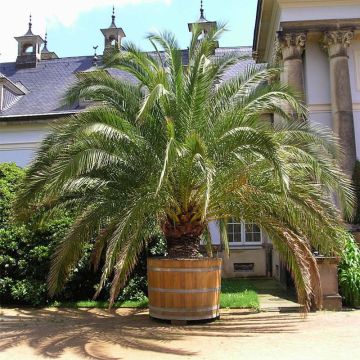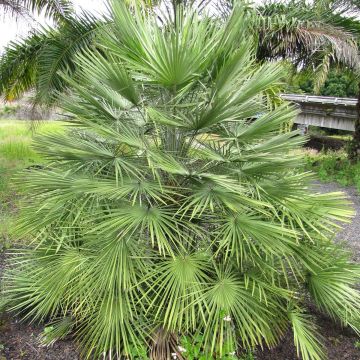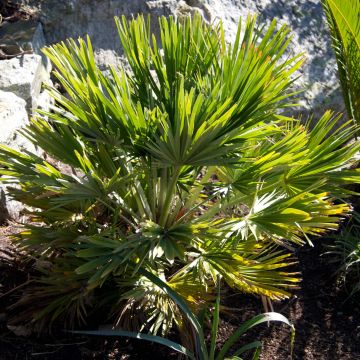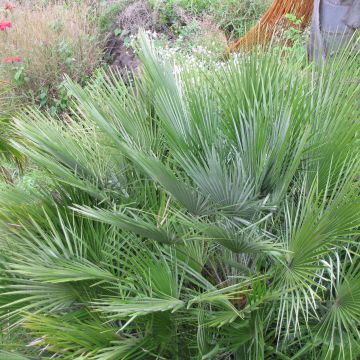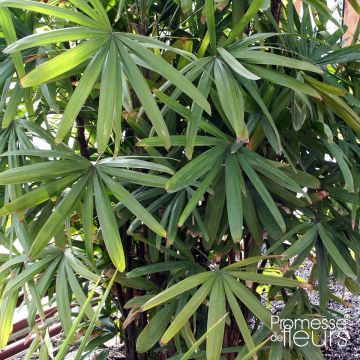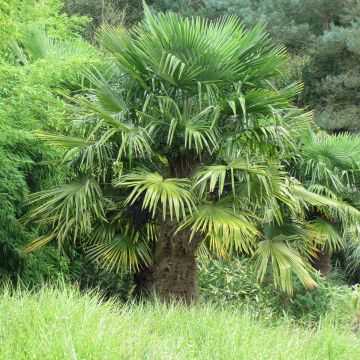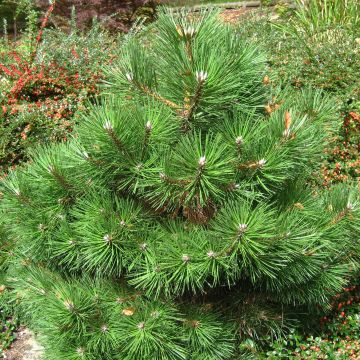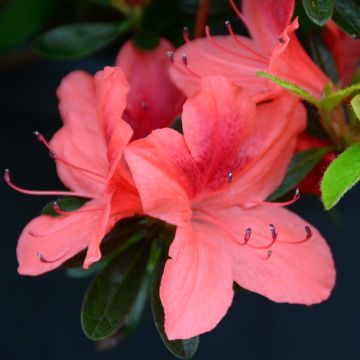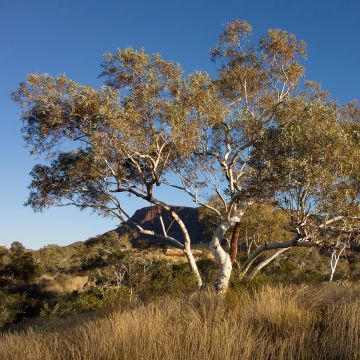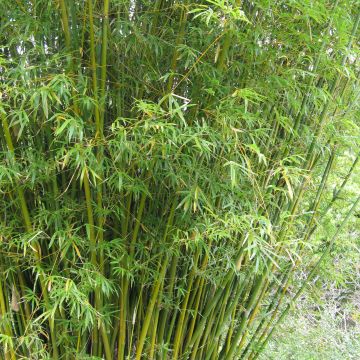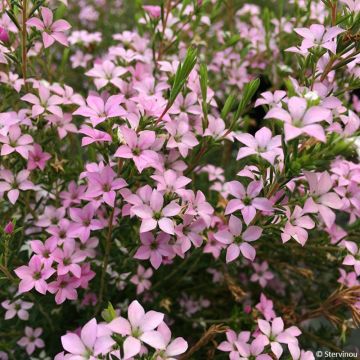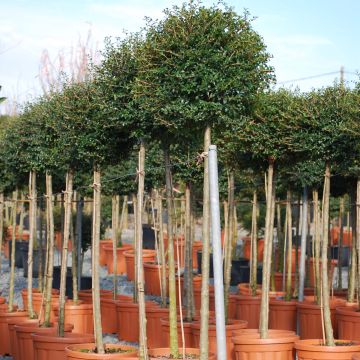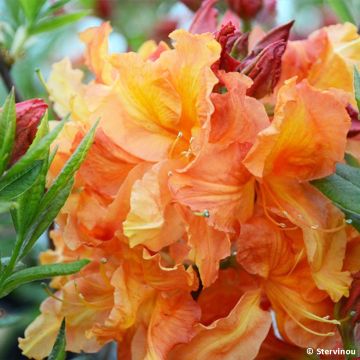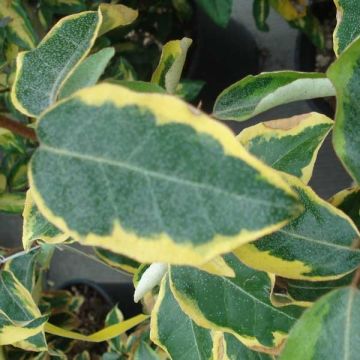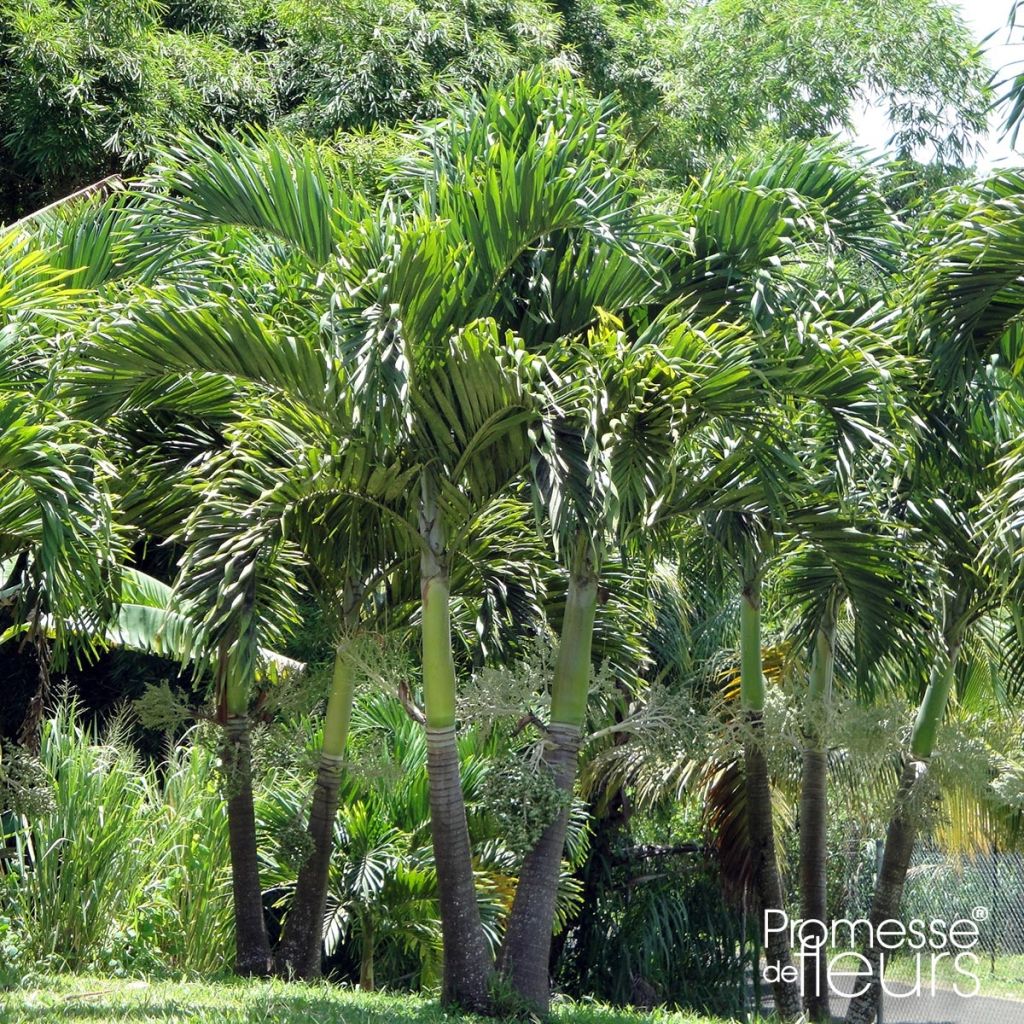

Veitchia merrillii - Manila Palm
Veitchia merrillii - Manila Palm
Veitchia merrillii
Manila Palm, Merrill Palm, Christmas Palm
Why not try an alternative variety in stock?
View all →This plant carries a 24 months recovery warranty
More information
We guarantee the quality of our plants for a full growing cycle, and will replace at our expense any plant that fails to recover under normal climatic and planting conditions.
Oversize package: home delivery by special carrier from €6.90 per order..
Express home delivery from €8.90.
Does this plant fit my garden?
Set up your Plantfit profile →
Description
Veitchia merrillii (syn. Adonidia merrillii), is more commonly known as the Manila Palm. It is a beautiful plant whose silhouette perfectly evokes the image of a palm tree. It bears a single and straight trunk, where a bouquet of large intense green fern leaves flourishes. Frost-sensitive, this species should be cultivated in pots or large containers, which allows it to be protected from the cold in winter. With modest and slow growth, the Manila palm is an excellent candidate for decorating a conservatory or a very bright interior not too heated in winter.
Veitchia merrillii belongs to the Arecaceae family. It originates from the Philippines, Malaysia, and Borneo, and has naturalised in the West Indies. It is known as the 'Christmas Palm' because it bears fruit during that time of year. This species of humid tropical climates does not tolerate frost, but it adapts well to indoor cultivation as long as winter temperatures do not drop below 10°C (50°F) and the atmosphere remains somewhat humid. Young plants take some time to establish themselves, after which growth accelerates. In the ground, the Manila palm can reach over 4.5m (15ft) in height, but it will not exceed 2m (7ft) in all directions if cultivated in a pot indoors or in a greenhouse.
Veitchia merrillii slowly develops a single trunk, called a stipe, which is grey in colour and strongly ringed with prominent leaf scars. At the top of this stipe, a beautiful trailing crown of leaves develops. It is composed of 12 to 15 large pinnate leaves, reaching 2m (7ft) in length, curving downwards. The leaf is divided into 40 to 62 lanceolate leaflets, regularly arranged in a single plane. They are slightly pendulous. Their colour is dark green on both sides. Once dead, the leaf detaches from the stipe and falls to the ground. Flowering occurs in summer, on mature plants aged 10 to 11 years, under favourable cultivation conditions. It takes the form of arching and branching inflorescences, reaching 40 to 50cm (16 to 20in) in length, emerging below the leaves. Each inflorescence has white flowers that will produce ovoid fruits with a beak, measuring 2cm (1in) in length and displaying a decorative bright red colour.
Veitchia merrillii is an architectural plant that will make a statement wherever it is planted. It tolerates container cultivation very well and can be taken out onto a patio or balcony from May to September, after an acclimatisation period. Position it in a prominent spot, initially exposing it to partial shade so that it gradually gets used to the sun. Like all palm trees, it is difficult to pair with other plants, due to its strong personality. Surround it with sculptural, sober, and colourful phormium, with precise and geometric agaves, or with Cordyline, for example.
Report an error about the product description
Veitchia merrillii - Manila Palm in pictures
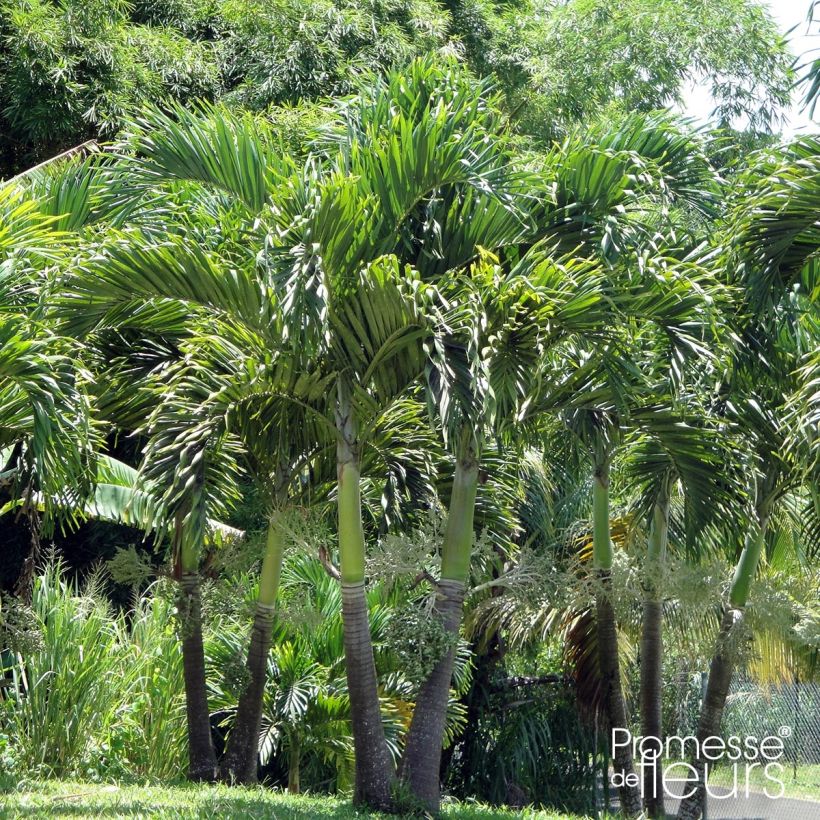

Plant habit
Flowering
Foliage
Botanical data
Veitchia
merrillii
Arecaceae (Palmae)
Manila Palm, Merrill Palm, Christmas Palm
Southeast Asia
Other Palm trees A to Z
Planting and care
It is a tender tropical plant that thrives in warm and humid conditions and perishes below 0°C (32°F). It adapts well to container or large pot cultivation. Young plants are sensitive to direct sunlight, while adult specimens appreciate it. It requires light and well-draining, rich and fertile soil, that remains consistently moist throughout the growing season, from spring to autumn. In winter, watering should be slightly reduced, but the growing medium should never completely dry out. It requires little maintenance, except for pruning the oldest fronds close to the stem.
Container cultivation:
Choose a large pot or a container with a perforated bottom. The pot should have a capacity of 40 litres. Place a layer of clay pebbles or pumice at the bottom to facilitate drainage. Prepare a mixture consisting of 25% ericaceous soil, 50% compost or humus, and 25% sand. Add a little crushed horn. Mix everything well. Partially fill your container, after placing a drainage layer at the bottom (clay pebbles, gravel, broken terracotta pots, etc.). Place your palm on the mixture, ensuring that the collar (the area where the roots originate) does not protrude from the pot but is not buried too deeply either. Add the remaining mixture around the root ball, firmly compacting it. Water in stages to thoroughly saturate the growing medium with water and eliminate air pockets.
Place your palm in a very bright location, avoiding direct harsh sunlight (not behind a window or glass door). In winter, the optimal temperature in the greenhouse or conservatory should be between 10 and 15°C (50 and 59°F). Regularly mist the foliage to counteract dry air. Clean the leaves with a sponge to remove dust. Initially, when outside, place it in partial shade to protect its foliage. After two weeks in partial shade, you can gradually expose it to sunlight. Apply liquid fertiliser for green plants once a month from March to August.
Planting period
Intended location
Care
This item has not been reviewed yet - be the first to leave a review about it.
Evergreen shrubs
Haven't found what you were looking for?
Hardiness is the lowest winter temperature a plant can endure without suffering serious damage or even dying. However, hardiness is affected by location (a sheltered area, such as a patio), protection (winter cover) and soil type (hardiness is improved by well-drained soil).

Photo Sharing Terms & Conditions
In order to encourage gardeners to interact and share their experiences, Promesse de fleurs offers various media enabling content to be uploaded onto its Site - in particular via the ‘Photo sharing’ module.
The User agrees to refrain from:
- Posting any content that is illegal, prejudicial, insulting, racist, inciteful to hatred, revisionist, contrary to public decency, that infringes on privacy or on the privacy rights of third parties, in particular the publicity rights of persons and goods, intellectual property rights, or the right to privacy.
- Submitting content on behalf of a third party;
- Impersonate the identity of a third party and/or publish any personal information about a third party;
In general, the User undertakes to refrain from any unethical behaviour.
All Content (in particular text, comments, files, images, photos, videos, creative works, etc.), which may be subject to property or intellectual property rights, image or other private rights, shall remain the property of the User, subject to the limited rights granted by the terms of the licence granted by Promesse de fleurs as stated below. Users are at liberty to publish or not to publish such Content on the Site, notably via the ‘Photo Sharing’ facility, and accept that this Content shall be made public and freely accessible, notably on the Internet.
Users further acknowledge, undertake to have ,and guarantee that they hold all necessary rights and permissions to publish such material on the Site, in particular with regard to the legislation in force pertaining to any privacy, property, intellectual property, image, or contractual rights, or rights of any other nature. By publishing such Content on the Site, Users acknowledge accepting full liability as publishers of the Content within the meaning of the law, and grant Promesse de fleurs, free of charge, an inclusive, worldwide licence for the said Content for the entire duration of its publication, including all reproduction, representation, up/downloading, displaying, performing, transmission, and storage rights.
Users also grant permission for their name to be linked to the Content and accept that this link may not always be made available.
By engaging in posting material, Users consent to their Content becoming automatically accessible on the Internet, in particular on other sites and/or blogs and/or web pages of the Promesse de fleurs site, including in particular social pages and the Promesse de fleurs catalogue.
Users may secure the removal of entrusted content free of charge by issuing a simple request via our contact form.
The flowering period indicated on our website applies to countries and regions located in USDA zone 8 (France, the United Kingdom, Ireland, the Netherlands, etc.)
It will vary according to where you live:
- In zones 9 to 10 (Italy, Spain, Greece, etc.), flowering will occur about 2 to 4 weeks earlier.
- In zones 6 to 7 (Germany, Poland, Slovenia, and lower mountainous regions), flowering will be delayed by 2 to 3 weeks.
- In zone 5 (Central Europe, Scandinavia), blooming will be delayed by 3 to 5 weeks.
In temperate climates, pruning of spring-flowering shrubs (forsythia, spireas, etc.) should be done just after flowering.
Pruning of summer-flowering shrubs (Indian Lilac, Perovskia, etc.) can be done in winter or spring.
In cold regions as well as with frost-sensitive plants, avoid pruning too early when severe frosts may still occur.
The planting period indicated on our website applies to countries and regions located in USDA zone 8 (France, United Kingdom, Ireland, Netherlands).
It will vary according to where you live:
- In Mediterranean zones (Marseille, Madrid, Milan, etc.), autumn and winter are the best planting periods.
- In continental zones (Strasbourg, Munich, Vienna, etc.), delay planting by 2 to 3 weeks in spring and bring it forward by 2 to 4 weeks in autumn.
- In mountainous regions (the Alps, Pyrenees, Carpathians, etc.), it is best to plant in late spring (May-June) or late summer (August-September).
The harvesting period indicated on our website applies to countries and regions in USDA zone 8 (France, England, Ireland, the Netherlands).
In colder areas (Scandinavia, Poland, Austria...) fruit and vegetable harvests are likely to be delayed by 3-4 weeks.
In warmer areas (Italy, Spain, Greece, etc.), harvesting will probably take place earlier, depending on weather conditions.
The sowing periods indicated on our website apply to countries and regions within USDA Zone 8 (France, UK, Ireland, Netherlands).
In colder areas (Scandinavia, Poland, Austria...), delay any outdoor sowing by 3-4 weeks, or sow under glass.
In warmer climes (Italy, Spain, Greece, etc.), bring outdoor sowing forward by a few weeks.


































